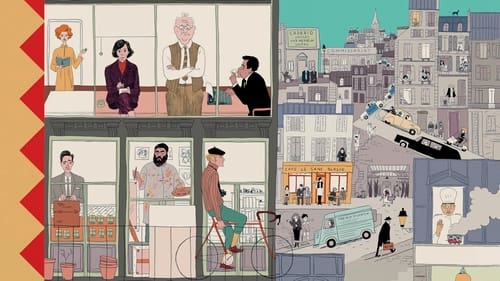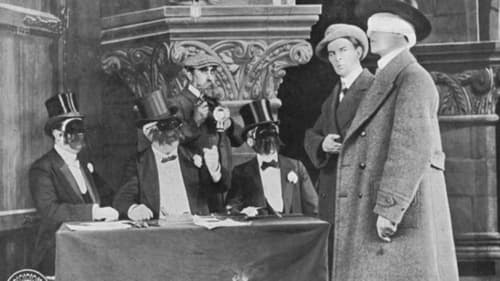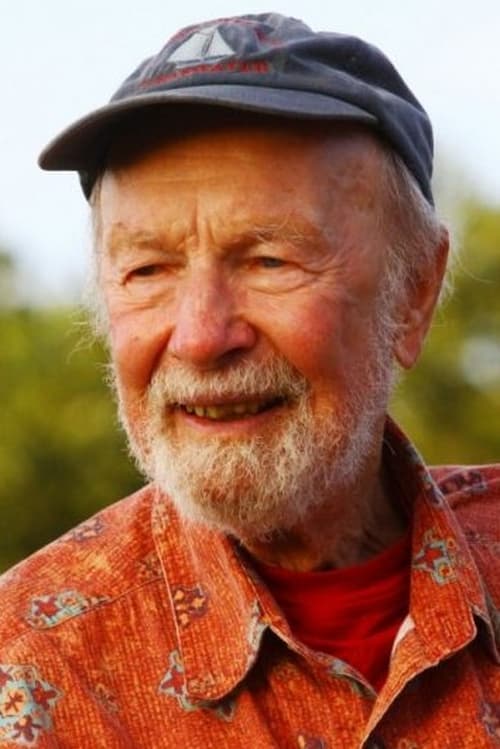Indian Summer (1960)
Género : Documental
Tiempo de ejecución : 28M
Director : Jules Schwerin
Sinopsis
On the first hot day of summer, an old farmer goes fishing just as he has done for many years on the West Branch of the Delaware River. A young boy, his frequent fishing companion, eagerly takes him to see the first giant bulldozers, which are to begin construction on the Cannonsville Reservoir. In order to provide more water for the cities, the vast project will flood the valley. The old man goes to the general store and walks the length of the valley to talk about his concerns, but most people do not support him. The young people of the valley celebrate at a barn dance. The old man resists eviction with his unloaded flintlock. The next day, he watches as the houses and farms are burned to clear the way. His friend, the fiddler, picks him up and takes him and his few belongings away.

¿Qué tienen en común películas como Casablanca, El Padrino y West Side Story? Además de su popularidad, han sido consideradas “significativas desde un punto de vista cultural, histórico o estético” por la Biblioteca del Congreso de los Estados Unidos y catalogadas en el Registro Nacional de Cinematografía, un listado de los tesoros del cine norteamericano que refleja la diversidad de las películas, y por lo tanto de la misma experiencia de Norteamérica. Cada año se añaden 25 películas al Registro. La lista actual de 525 películas incluye títulos de todas las categorías: documentales, clásicos de Hollywood, cine de vanguardia, cortos y cine mudo. El documental These Amazing Shadows es un detallado dossier de la rica y extensa filmografía estadounidense, no sólo desde un punto de vista cinéfilo, sino también cultural y humano.

Anders pronto finalizará un tratamiento en un centro de desintoxicación situado en el campo. Como parte de su terapia, una mañana le autorizan a ir a la ciudad para presentarse a una entrevista de trabajo. Aprovechando este permiso, se queda en la ciudad vagando y encuentra a gente que hacía mucho tiempo que no veía. Anders, de 34 años, inteligente, guapo y de buena familia, está profundamente perturbado por las oportunidades que ha desaprovechado y por las personas a las que ha decepcionado. Todavía es joven, pero siente que su vida ya ha terminado. El día se termina y se anuncia una larga noche en la que los errores del pasado suscitarán la posibilidad del amor, de una nueva vida y de la esperanza de imaginar un porvenir a partir del día siguiente.

Among the pieces featured in Fragments are the final reel of John Ford's The Village Blacksmith (1922) and a glimpse at Emil Jannings in The Way of All Flesh (1927), the only Oscar®-winning performance in a lost film. Fragments also features clips from such lost films as Cleopatra (1917), starring Theda Bara; The Miracle Man (1919), with Lon Chaney; He Comes Up Smiling (1918), starring Douglas Fairbanks; an early lost sound film, Gold Diggers of Broadway (1929), filmed in early Technicolor, and the only color footage of silent star Clara Bow, Red Hair (1928). The program is rounded out with interviews of film preservationists involved in identifying and restoring these films. Also featured is a new interview with Diana Serra Cary, best known as "Baby Peggy", one of the major American child stars of the silent era, who discusses one of the featured fragments, Darling of New York (1923).

A documentary on Cosme Alves Netto (1937-1996), former head of the Cinematheque of the Museum of Modern Arts at Rio de Janeiro.

Una exposición de la obra de la fotógrafa de guerra Isabelle Reed, tres años después de su prematura muerte, lleva a su hijo mayor de vuelta a la casa familiar. Allí pasará tiempo con su padre Gene y su hermano menor. Estando los tres bajo el mismo techo, Gene tratará de estrechar lazos con sus dos hijos mientras ellos luchan por reconciliar sus sentimientos hacia su fallecida madre, mujer que recuerdan de manera diferente.

In this John Nesbitt's Passing Parade short, a look is taken at the problems of film preservation efforts in the 1930s and early 1940s.

Una carta de amor al mundo del periodismo, ambientada en el contexto de la redacción de un periódico americano en el París del siglo XX, con tres historias interconectadas entre sí.

This John Nesbitt's Passing Parade series short highlights the film preservation efforts of the Museum of Modern Art in New York. Several scenes from early newsreels are shown.

Un grupo de amigos vacaciona en una cabaña cerca de un lago donde las leyendas locales dicen que un hombre desapareció en circunstancias misteriosas. No pasa mucho tiempo hasta que comienzan a sentir la misma fuerza oscura que los acerca al lago.

Una plataforma petrolífera se hunde dramáticamente en la costa noruega, y los investigadores intentan averiguar qué ha pasado cuando se dan cuenta de que esto es solo el comienzo de algo aún más grave.

THE TRAIN is an allegory inspired by current events. There is an ongoing battle between good and evil, and Christianity is now under severe persecution. The film starts in the not-too-distant future in the year 2041 and it pivots between two different timelines. This film illustrates the conflicts as well as the erosion evil powers have created within the Roman Catholic Church. The laity itself becomes the main force holding the church together, as it fights the powers of darkness that takes the lives of Father Michael, Christie and her two daughters, Anna and Mary. The evil "Grandmother" who is the head of an ancient crime syndicate, and hates all of humanity, is desperately trying to get her hands on a vial which contains some droplets of the blood of Christ, now in the possession of Cardinal Langham, who bravely stands up to the communist forces that are chopping Christian's heads off.

Today, the art world and beyond is obsessed with shooting analog. Whether it's a fashion house seeking to bring a new edge to their creative work, an amateur perusing eBay for the perfect vintage Polaroid, or an influencer attempting to capture a comforting retro aesthetic on social media, analog photography has piqued the interest of people everywhere. Is this resurgence a backlash against digital photography? Is it just a trend perpetuated by our desire for authenticity in an increasingly superficial world? Or is it something else entirely?
Grain: Analog Renaissance is a documentary by Alex Contell and Tommaso Sacconi that explores the stories of those committed to using film in modern day photography.

Signe y Thomas mantienen una relación de pareja malsana y competitiva, que toma un giro pernicioso cuando Thomas obtiene cierta notoriedad como artista contemporáneo. La reacción de Signe consistirá en inventarse un nuevo personaje y tratar a la desesperada de llamar la atención y suscitar la compasión para recuperar su estatus.

Stacey is a young mother trapped in a violent marriage who wants to see her daughter as Cinderella in the school play but must first escape the nightmare of her own Prince Charming.

With the aid of usb microscopes and X-ray scanners, this is the first of many test films, peering into the surface structure of decayed and rotted 35 mm celluloid film. Thank you Brian Eno for the music.

Through the entanglement of home videos, archival footage, and cinéma vérité, I Am Corn Puffians: Ghost Camera seizes 116 years of Toronto history to tell the tale of a documentarian's descent into artistic madness.

Some Things Hidden (2020) is an experiment in rhythmic succession of still images to create illusions of movement through space in an altered time. The film documents a day with the artist and his parents on a hike through active bear country, beneath the Grand Tetons in Wyoming using a hand cranked 35mm movie camera.

En la segunda década del siglo pasado, el guayaquileño Augusto San Miguel (1905-1937) dirigió, produjo y protagonizó las primeras películas de ficción realizadas en el Ecuador. Desgraciadamente las películas de San Miguel -como varios episodios de su vida- se perdieron en el tiempo. Lo único que queda de su producción cinematográfica son los anuncios en los diarios de la época, así como una misteriosa leyenda, según la cual fue enterrado con sus películas.

A 3 Part Collection of More Than 75 Early Films by Alice Guy, Louis Feuillade and Léonce Perret. The invention of cinema—and its growth into a sophisticated art form—are vividly brought to life in this massive collection of films from the early years of the influential Gaumont Film Company. Each disc is devoted to one of Gaumont’s artistic directors, who oversaw all film production at the studio, and profoundly influenced not only the identity of the studio but also the evolution of the cinema itself.

An exploration into the world of someone's psyche and how they find the words to explain the way they are viewing the world around them.














